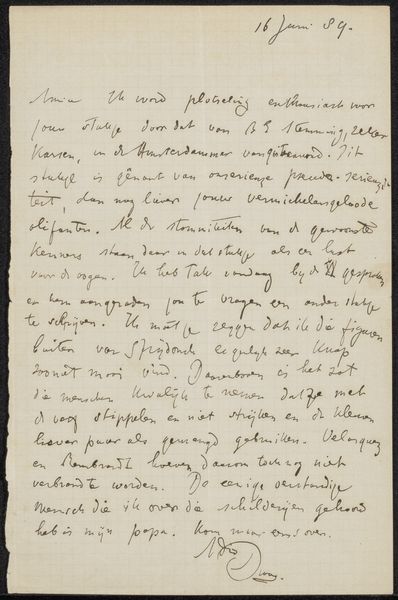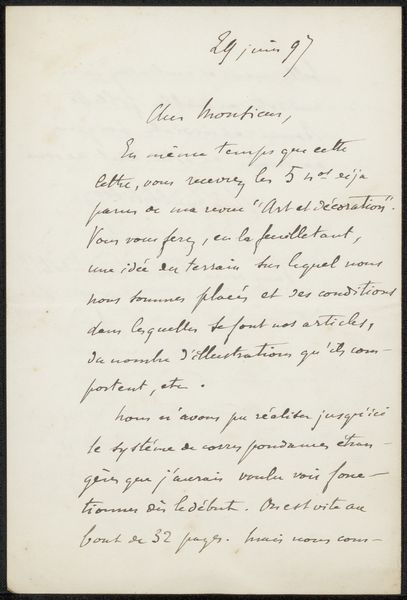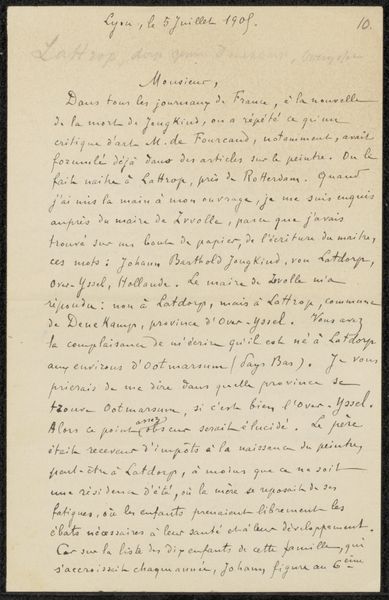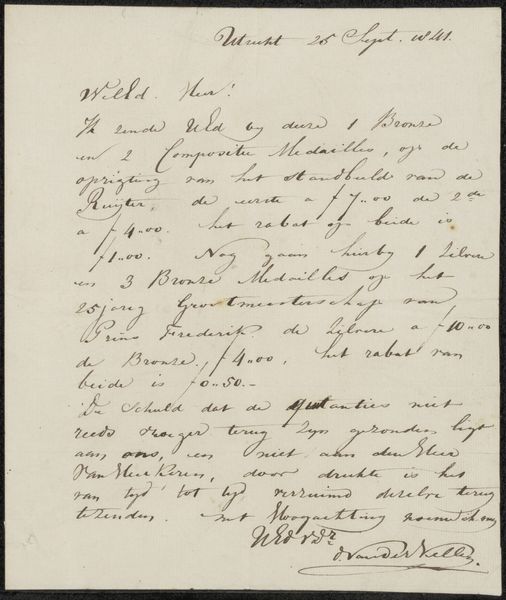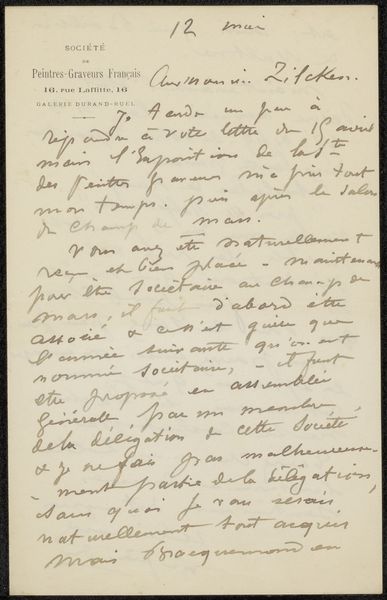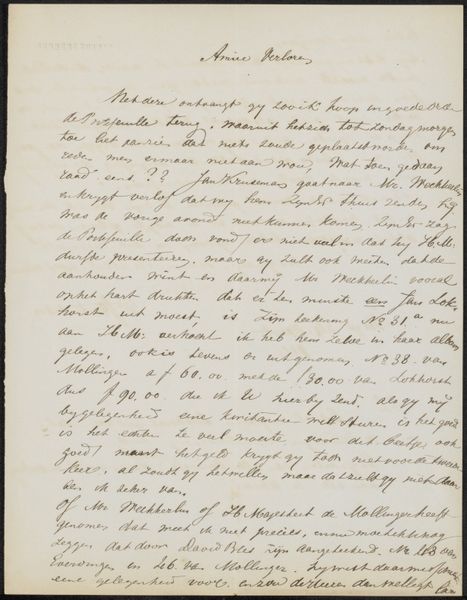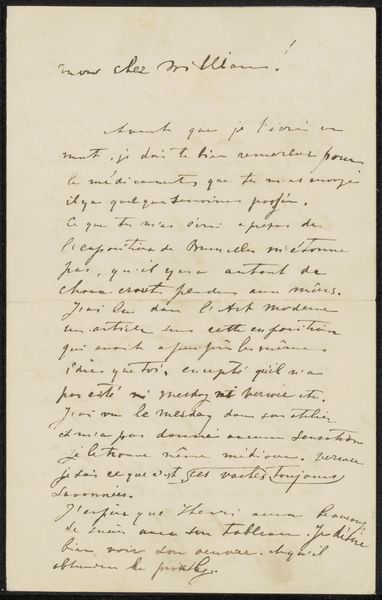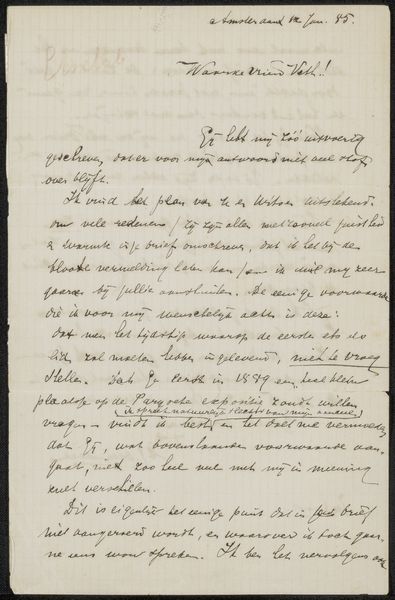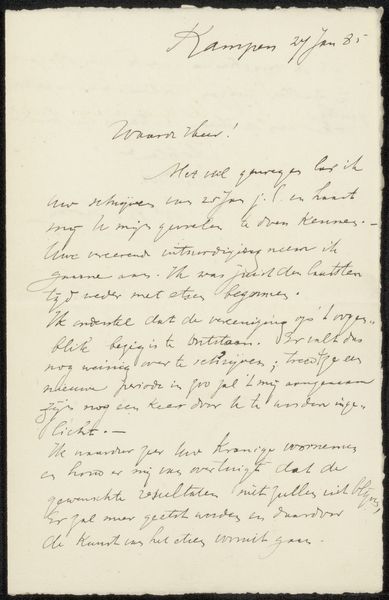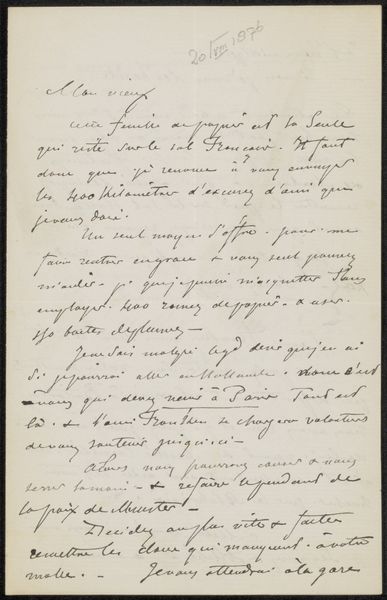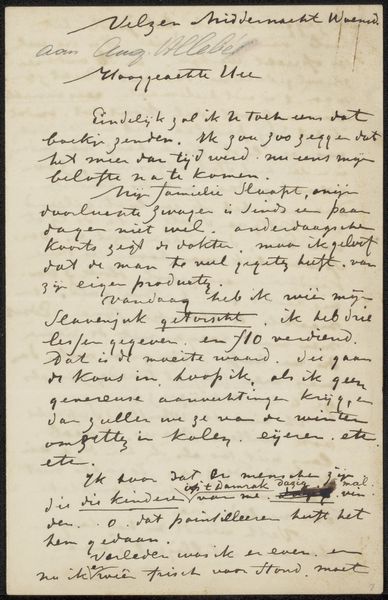
drawing, paper, ink
#
drawing
#
paper
#
ink
Copyright: Rijks Museum: Open Domain
Curator: We’re standing before Isaac Israels’ “Brief aan Jan Veth,” potentially from 1889, housed here at the Rijksmuseum. It's rendered in ink on paper. What are your initial impressions? Editor: It feels very intimate, like peering over someone's shoulder as they're composing their thoughts. There's a sense of immediacy and directness conveyed by the handwritten text, it offers us a glimpse into a private communication. Curator: Exactly. And that's partly due to the cultural significance of letter-writing itself during that era, functioning not only as communication, but also, like the artwork, offering the mark-making to embody shared human thought and care. Editor: It's interesting you point that out. I find myself wondering about the nature of Israels' relationship with Jan Veth. The letter is full of opinions about "Redon," perhaps it speaks to debates around modern art that were unfolding at that time? It has a confrontational tone! Curator: Precisely! Beyond a friendly gesture, there's clearly a passionate discourse unfolding, with Israels offering a critical review of another artist’s work. Do you think there is significance in how the text sprawls slightly haphazard across the page? Editor: Yes, that feeling enhances its candor! Israels even states in this letter that he "cannot understand Redon." But I wonder what kind of implications arise if such commentary were voiced today? Perhaps such commentary might seem quite brash or perhaps constructive, depending on who's looking... Curator: A testament to the way value judgments about artistic styles evolve! Today the practice of direct review continues within art discourse, even as platforms and audiences have become radically open and diverse. Editor: Looking at this piece made me reconsider how deeply rooted our ideas and discussions of art remain, carried and echoed even now. Curator: Agreed, engaging with an artifact such as this is more than an act of remembering but really allows for a reimagining of dialogue across time.
Comments
No comments
Be the first to comment and join the conversation on the ultimate creative platform.
